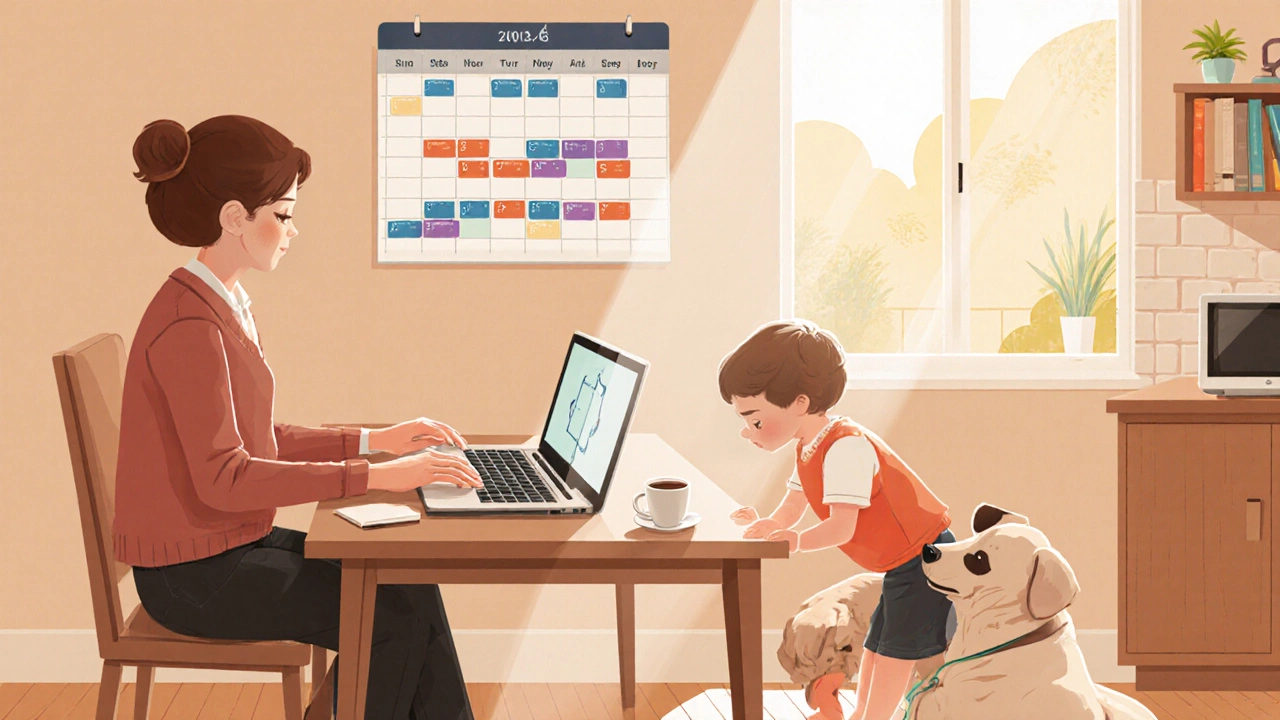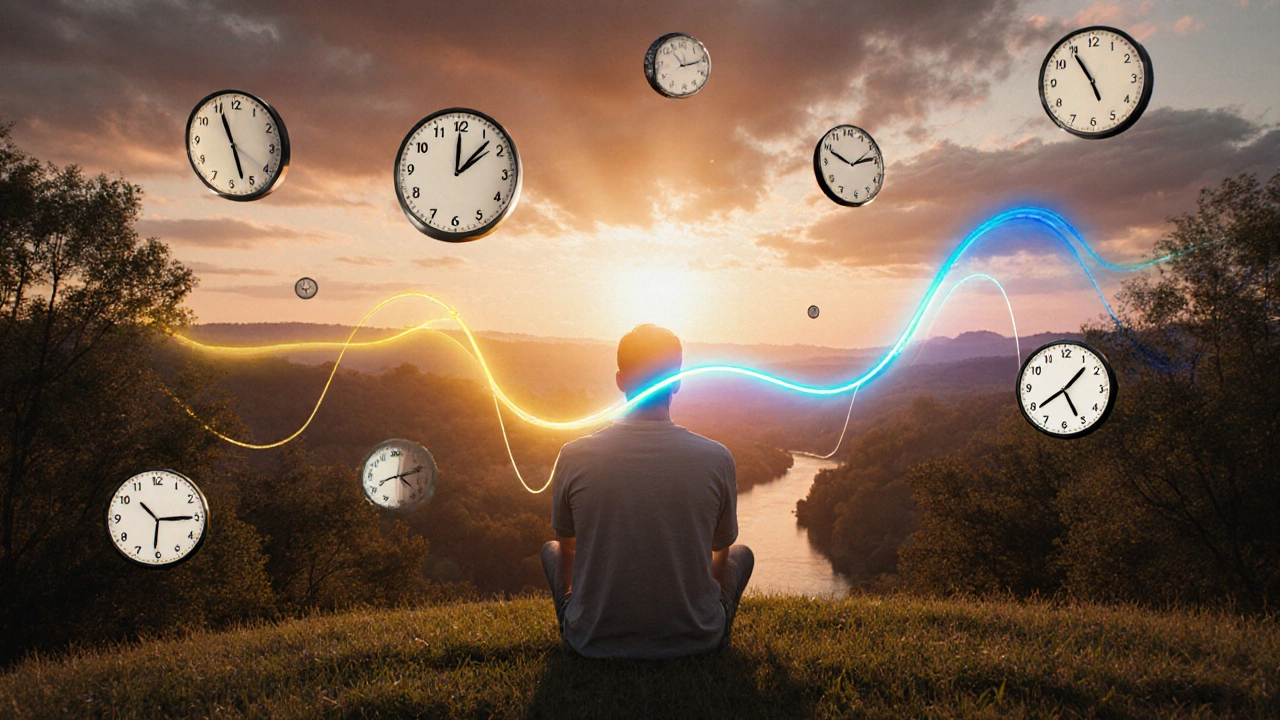Most people think work-life balance means working less. But that’s not it. Work-life balance isn’t about cutting hours-it’s about matching how you spend your time with what actually matters to you. The truth? There are three real types of work-life balance, and only one of them works long-term for most people. The other two sound good on paper, but they burn you out quietly, over time.
Boundary-Based Balance: The Classic Approach
This is the kind you see in corporate brochures: clock in at 9, clock out at 5, leave work at the office. Emails stay on the laptop. Calls don’t come home. Weekends are sacred. It sounds clean. It feels safe.
But here’s the catch: this only works if your job actually lets it. If you’re in healthcare, retail, freelance, or any role where deadlines are constant and clients expect instant replies, this model collapses. You end up working late anyway, then feel guilty for it. Or worse-you start checking emails during dinner just to keep up, and suddenly, your boundaries are gone.
Boundary-based balance works best for people with fixed schedules and clear off-hours. Think teachers, government workers, or salaried roles with strict policies. But even then, it’s fragile. One emergency project, one sick kid, one deadline shift-and the whole system cracks.
Integration-Based Balance: Blending Work and Life
This is the rise of the digital nomad, the parent who works from the kitchen table, the freelancer who takes a midday walk with their dog and answers emails while walking. No hard lines. Work and life mix. You answer a client call during your kid’s soccer game. You do your taxes on a Friday night because it’s the only quiet time.
Integration works when you control your schedule. If you’re self-employed, run a small business, or have a remote job with flexible hours, this can feel liberating. You don’t have to choose between being a parent and being a professional-you get to be both, at the same time.
But here’s what no one tells you: integration is exhausting if you don’t set limits. Without structure, work bleeds into every corner. You start answering Slack messages at 11 p.m. because “it’s just one quick thing.” You skip meals because you’re in the middle of a Zoom call. You don’t take real breaks because you’re always “on.”
Studies from the University of California show that people who integrate work and life without intentional rest periods report higher stress levels than those with clear boundaries-even if they work fewer hours.

Energy-Based Balance: The Real Secret
This is the one no one talks about, but it’s the only one that lasts. Energy-based balance isn’t about time. It’s about matching your work to your natural rhythm.
Think about it: some people are sharp at 6 a.m. Others hit their peak at 10 p.m. Some need four hours of deep focus, then a two-hour walk. Others thrive on short bursts with coffee breaks in between.
Energy-based balance means working when you’re energized, resting when you’re drained-even if it doesn’t fit a 9-to-5 mold. You take a nap after lunch because your brain is fried. You work late on Tuesday because you’ve got momentum. You take Wednesday off because your body needs it. You say no to meetings that drain you, even if they’re “important.”
This isn’t laziness. It’s efficiency. Research from Stanford shows that people who work in alignment with their natural energy cycles are 30% more productive and report 40% lower burnout rates than those who stick to rigid schedules.
It’s not about how many hours you work. It’s about whether you’re working when you’re capable of doing your best work-and giving yourself space to recover when you’re not.
Which Type Are You?
Ask yourself these three questions:
- Do you feel guilty when you work outside “normal” hours?
- Do you feel drained even after a full weekend off?
- Do you have days where you’re completely in the zone-and others where you can’t focus even with coffee?
If you answered yes to #1, you’re stuck in boundary-based balance that doesn’t fit your life. If you answered yes to #2, you’re integrating work and life without recovery. If you answered yes to #3, you’re already halfway to energy-based balance-you just haven’t named it yet.

Why Energy-Based Balance Wins
Because it doesn’t ask you to choose between work and life. It asks you to honor your body, your mind, and your rhythm. You don’t need more hours. You need better timing.
Companies that support energy-based balance don’t track hours. They track results. They let people work when they’re sharp. They encourage real breaks. They don’t punish someone for taking a Wednesday afternoon off to recharge-they celebrate it.
And here’s the kicker: people who operate on energy-based balance are more loyal, more creative, and more resilient. They don’t quit because they’re burned out. They stay because they feel seen.
How to Start Shifting
You don’t need a new job. You don’t need permission. You just need to start paying attention.
- Track your energy for one week. Note when you feel sharp, tired, or distracted.
- Block your most productive hours for your most important work.
- Schedule rest like it’s a meeting-non-negotiable.
- Let go of the idea that “busy” equals “valuable.”
- Protect your recovery time like it’s your most important asset.
Work-life balance isn’t a static goal. It’s a daily practice. And the only version that lasts is the one that fits you-not the one that looks good in a poster.
Is work-life balance the same for everyone?
No. What works for a nurse on night shifts won’t work for a freelance designer. Work-life balance isn’t one-size-fits-all. It’s about matching your structure to your life, not the other way around. The three types-boundary-based, integration-based, and energy-based-each suit different lifestyles. The key is figuring out which one aligns with your natural rhythm, not societal expectations.
Can you switch between types of work-life balance?
Yes, and you probably already do. Many people use boundary-based balance during busy work seasons and shift to energy-based balance during quieter times. The mistake is thinking you have to pick one and stick to it forever. Life changes. Your energy changes. Your balance should too. Flexibility is the real skill-not rigid adherence to a single model.
Does working from home mean you have better work-life balance?
Not necessarily. Working from home often leads to integration, which can feel freeing-but without clear routines, it leads to overwork. Many remote workers end up working longer hours because they never leave their workspace. The location doesn’t determine balance. Your boundaries and energy patterns do. You can be more balanced at a desk in an office than on a couch at home-if you structure your time intentionally.
What if my job doesn’t allow flexibility?
Even in rigid jobs, you can reclaim small pockets of energy-based balance. Take a 15-minute walk after lunch. Turn off notifications after 7 p.m. Use your lunch break to do something that recharges you-not scroll. These micro-adjustments add up. You don’t need full control to start honoring your rhythm. Start small, protect your recovery, and build from there.
Is burnout caused by working too much?
Not always. Burnout often comes from working when you’re drained, not from working long hours. Someone working 40 hours a week in alignment with their energy can feel energized. Someone working 25 hours a week in constant resistance-fighting fatigue, forcing focus, ignoring signals-can be completely burned out. It’s not about quantity. It’s about alignment.
